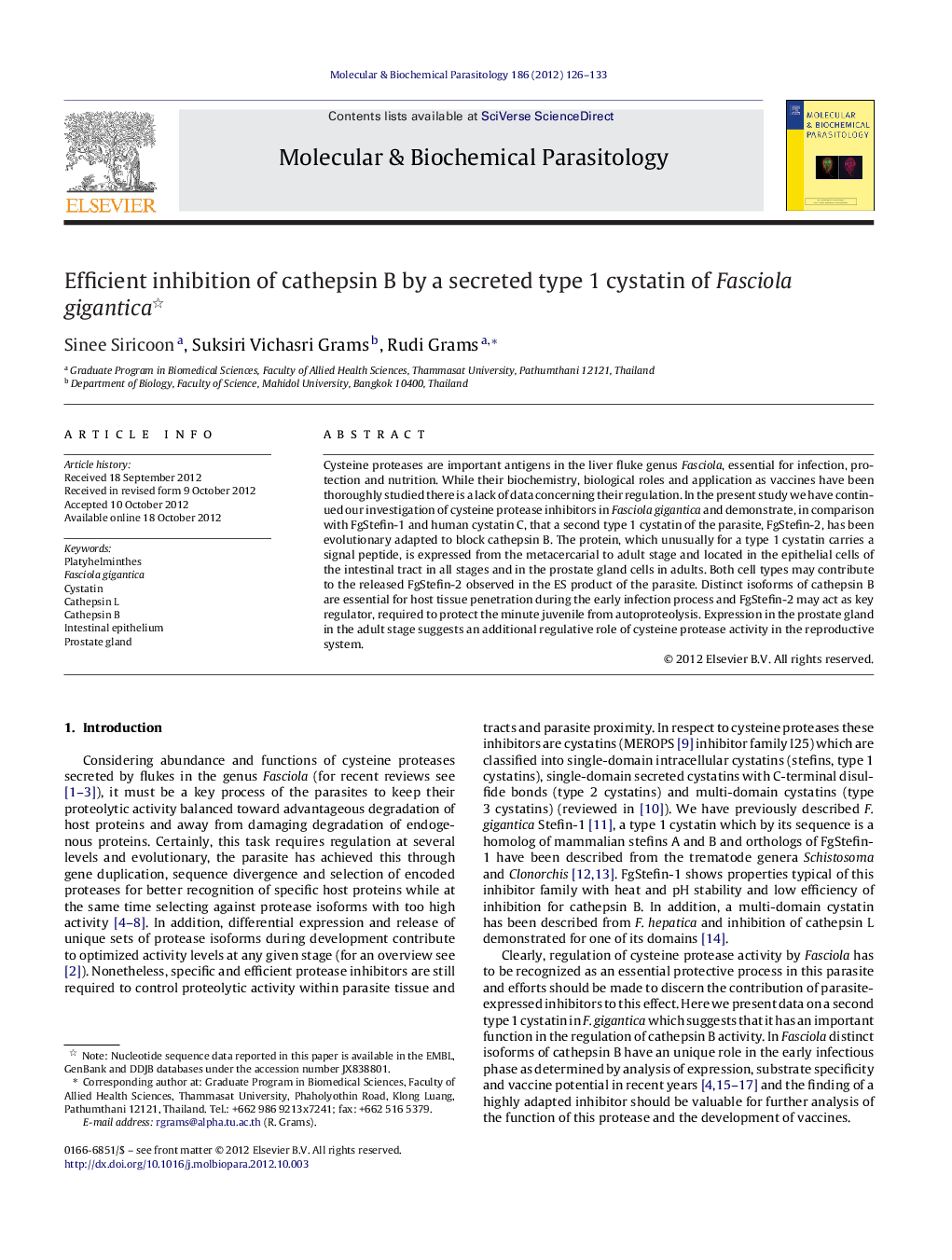| Article ID | Journal | Published Year | Pages | File Type |
|---|---|---|---|---|
| 2829807 | Molecular and Biochemical Parasitology | 2012 | 8 Pages |
Cysteine proteases are important antigens in the liver fluke genus Fasciola, essential for infection, protection and nutrition. While their biochemistry, biological roles and application as vaccines have been thoroughly studied there is a lack of data concerning their regulation. In the present study we have continued our investigation of cysteine protease inhibitors in Fasciola gigantica and demonstrate, in comparison with FgStefin-1 and human cystatin C, that a second type 1 cystatin of the parasite, FgStefin-2, has been evolutionary adapted to block cathepsin B. The protein, which unusually for a type 1 cystatin carries a signal peptide, is expressed from the metacercarial to adult stage and located in the epithelial cells of the intestinal tract in all stages and in the prostate gland cells in adults. Both cell types may contribute to the released FgStefin-2 observed in the ES product of the parasite. Distinct isoforms of cathepsin B are essential for host tissue penetration during the early infection process and FgStefin-2 may act as key regulator, required to protect the minute juvenile from autoproteolysis. Expression in the prostate gland in the adult stage suggests an additional regulative role of cysteine protease activity in the reproductive system.
Graphical abstractFigure optionsDownload full-size imageDownload high-quality image (112 K)Download as PowerPoint slideHighlights► Fasciola gigantica expresses a second type 1 cystatin, FgStefin-2. ► FgStefin-2 carries a signal peptide and is present in the ES product. ► FgStefin-2 is expressed in the intestinal epithelium and prostate gland. ► FgStefin-2 is an efficient inhibitor of cathepsin B. ► A major role of FgStefin-2 in the protection from endogenous cathepsin B during the infection phase is proposed.
